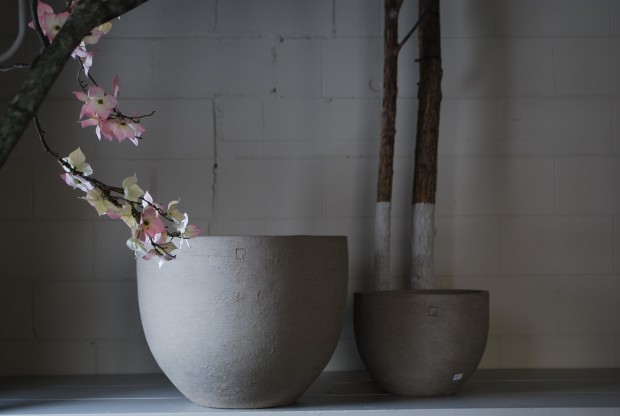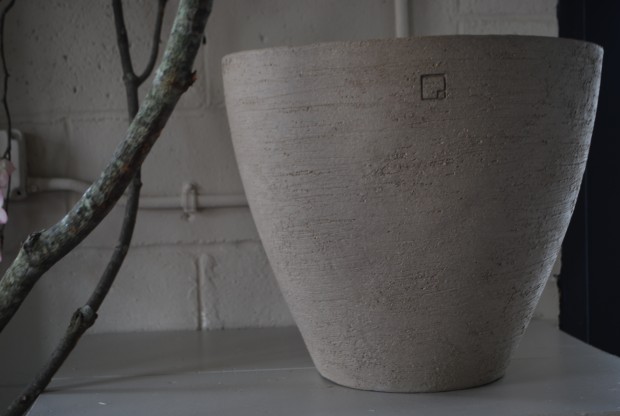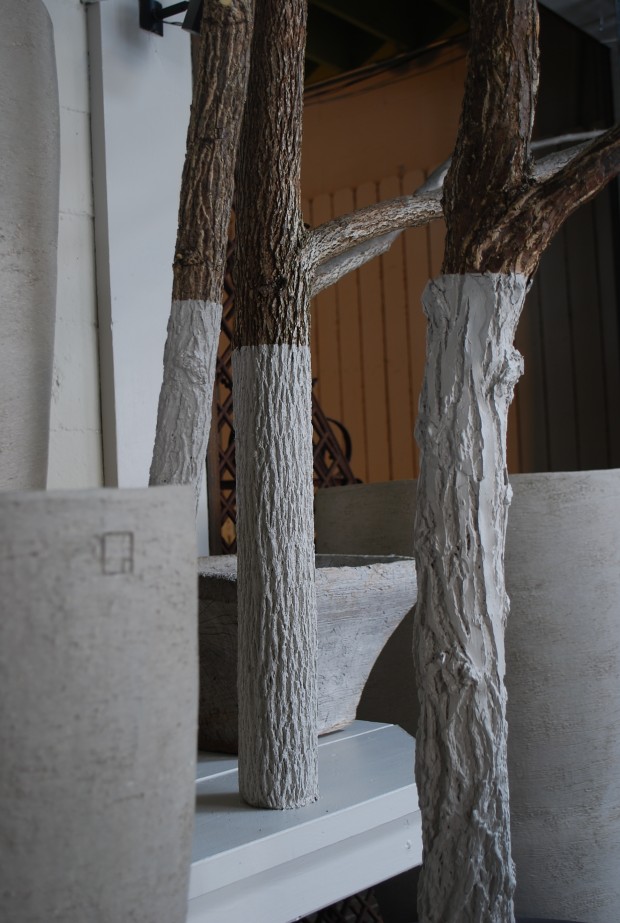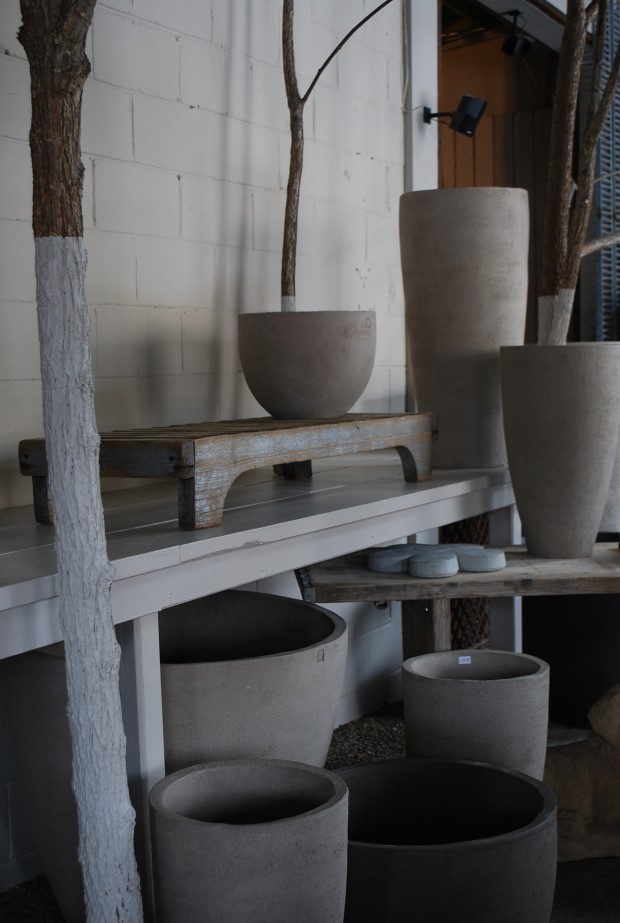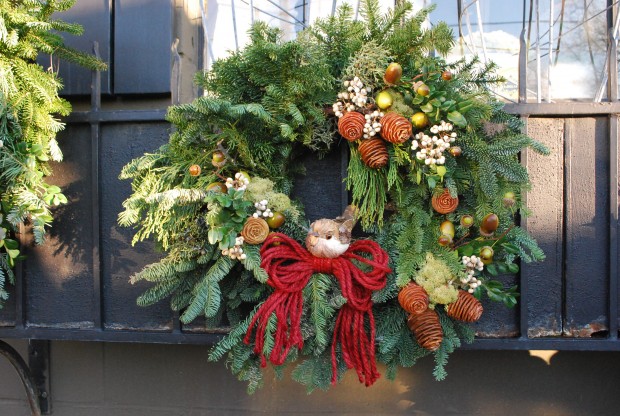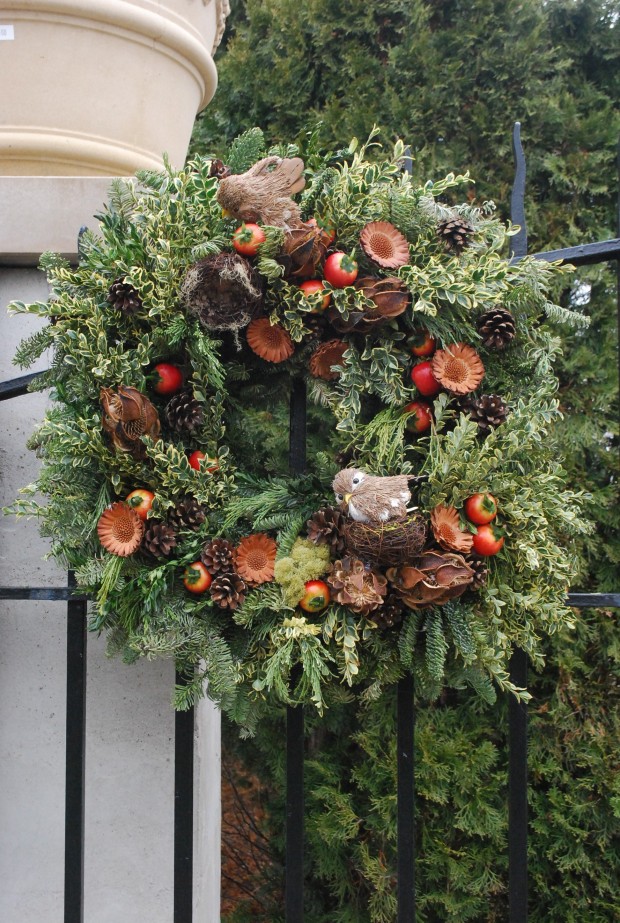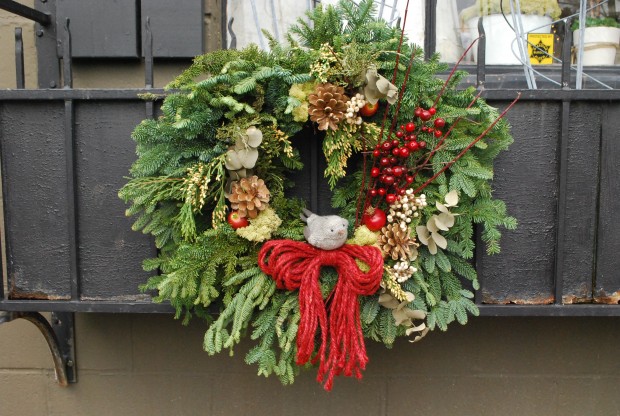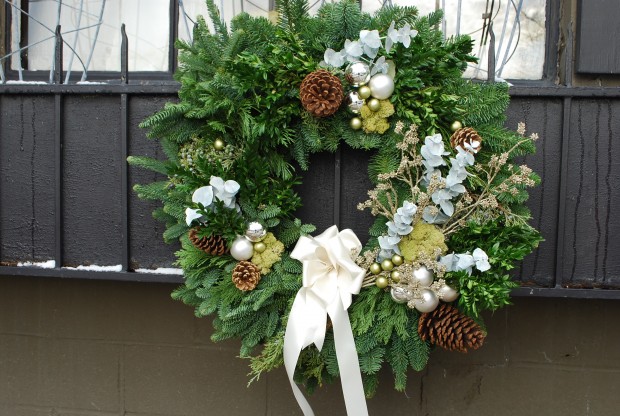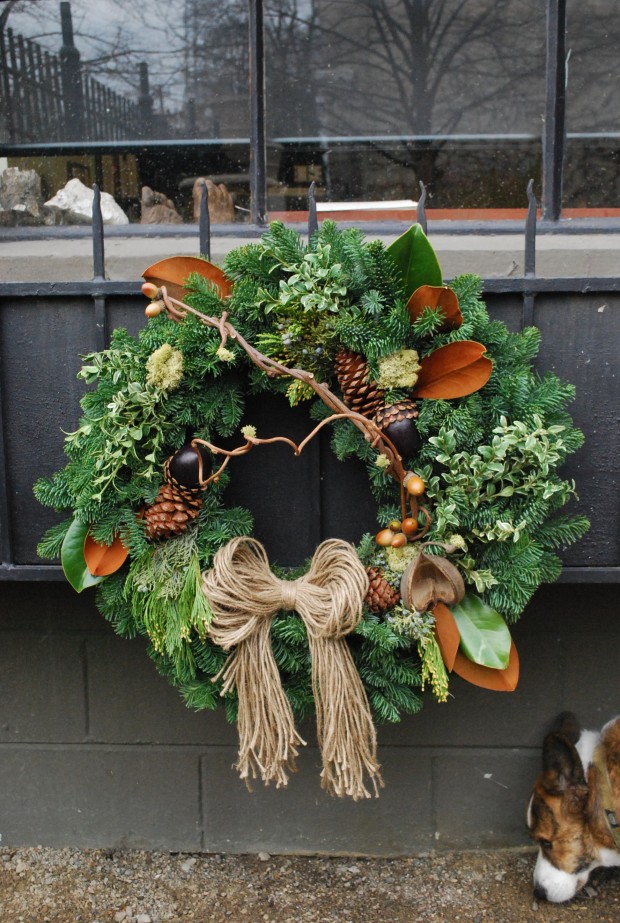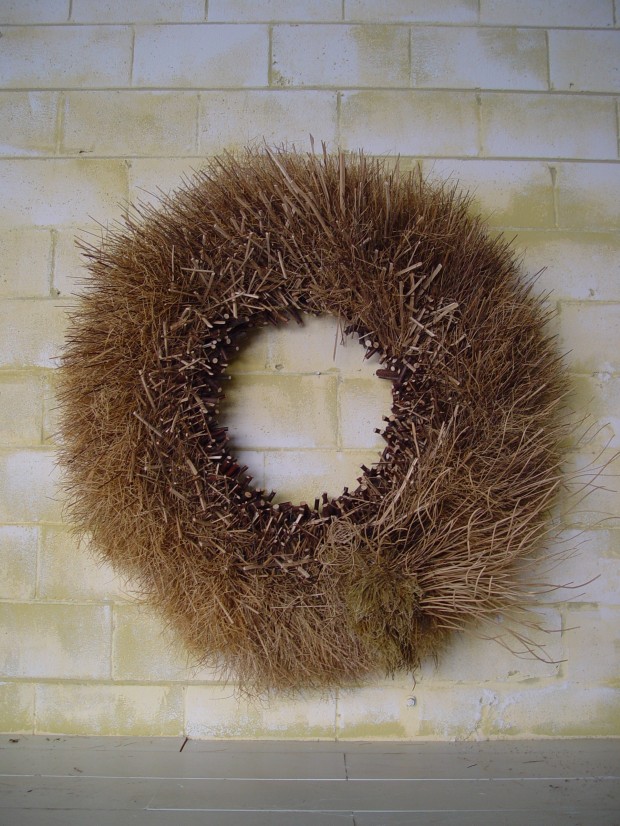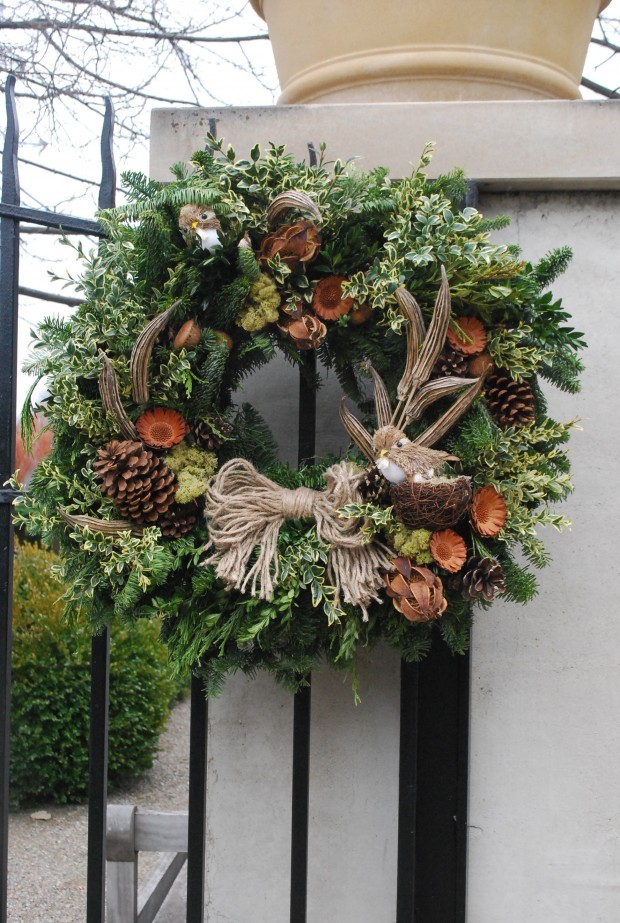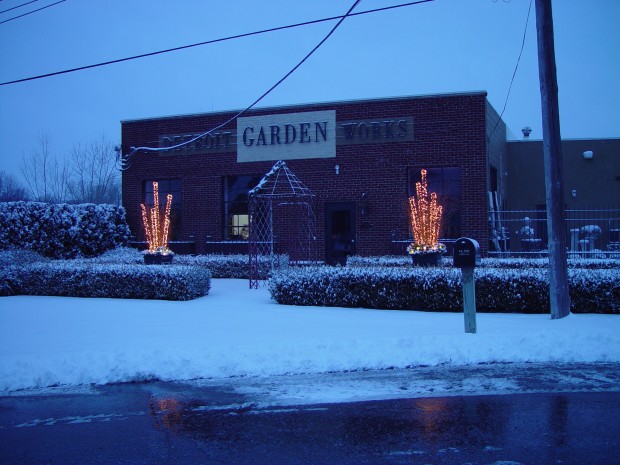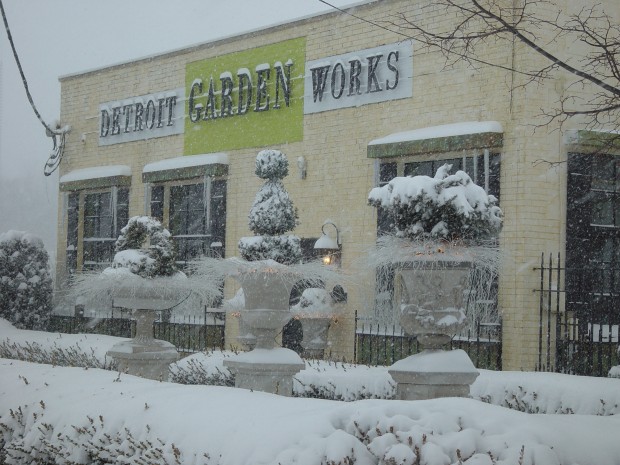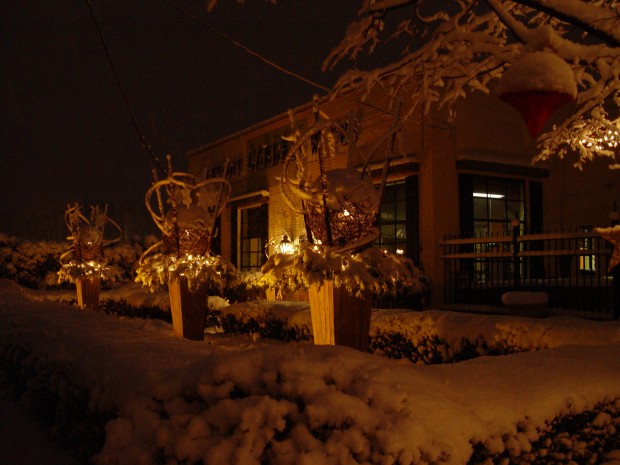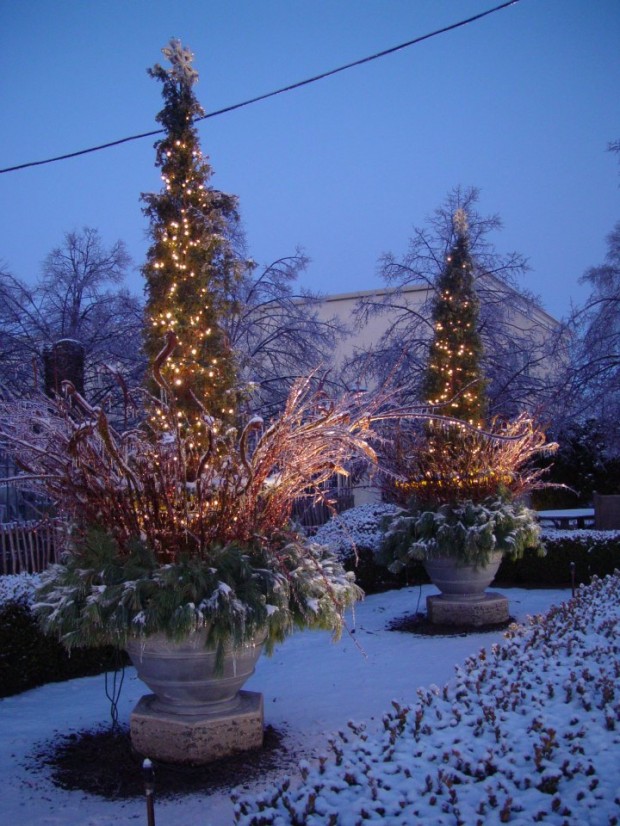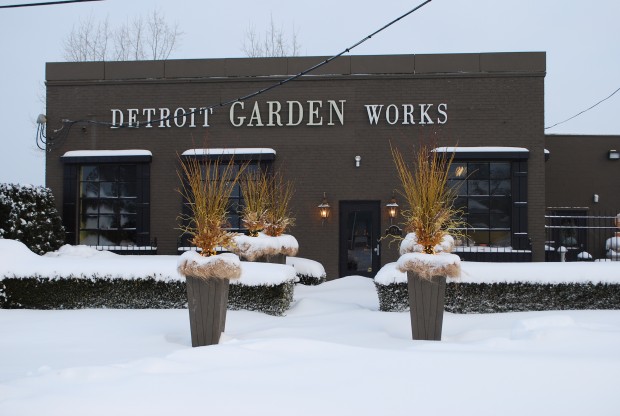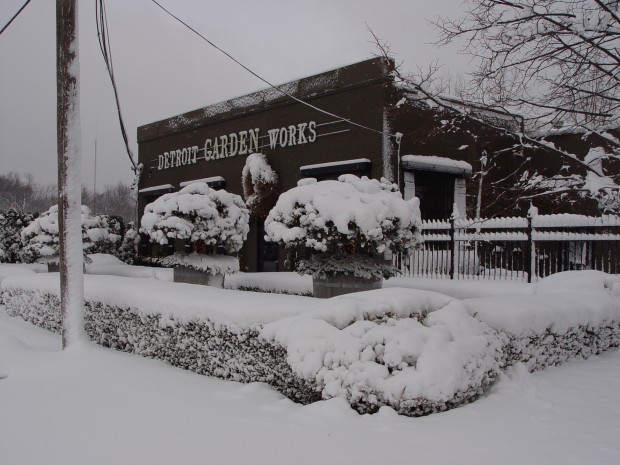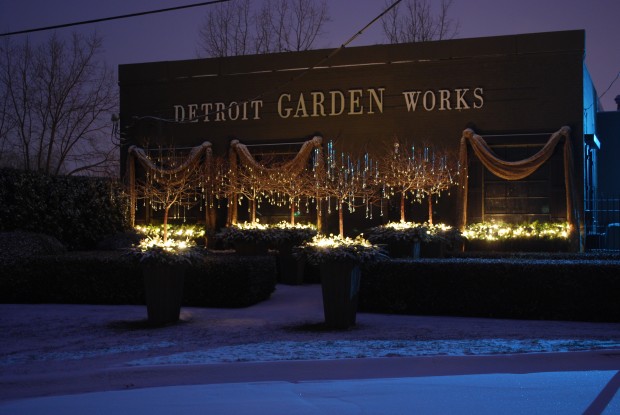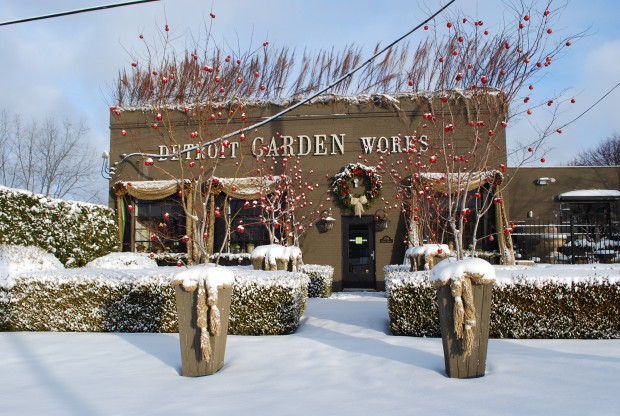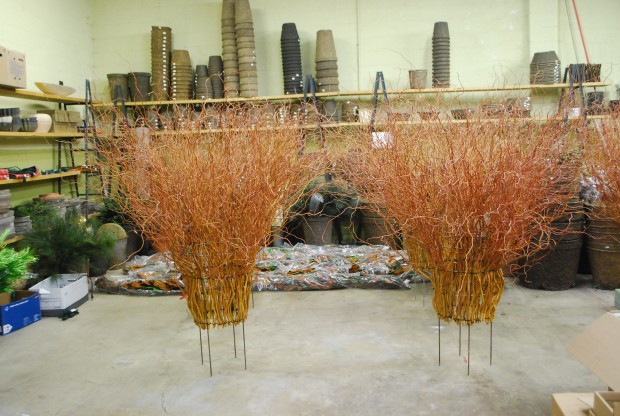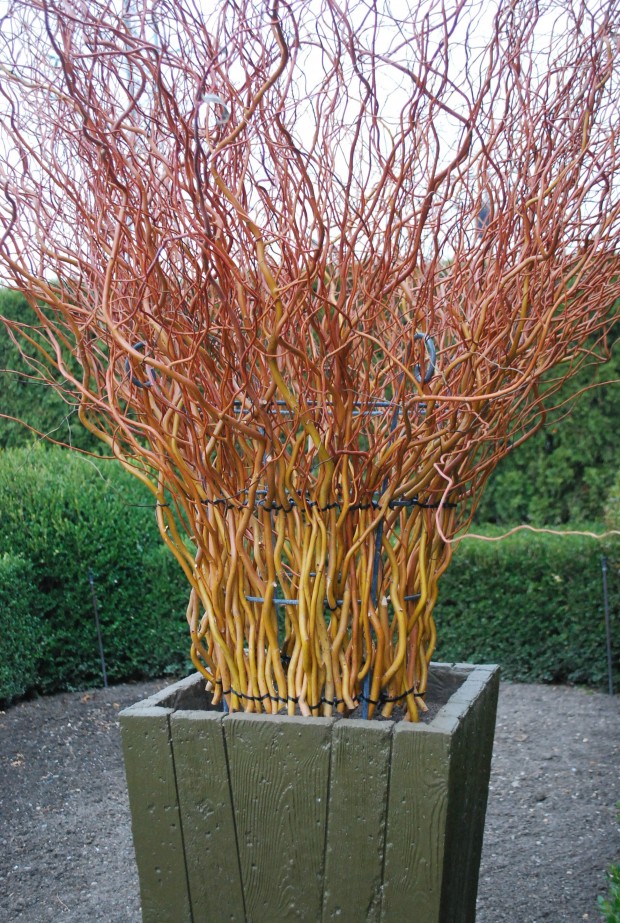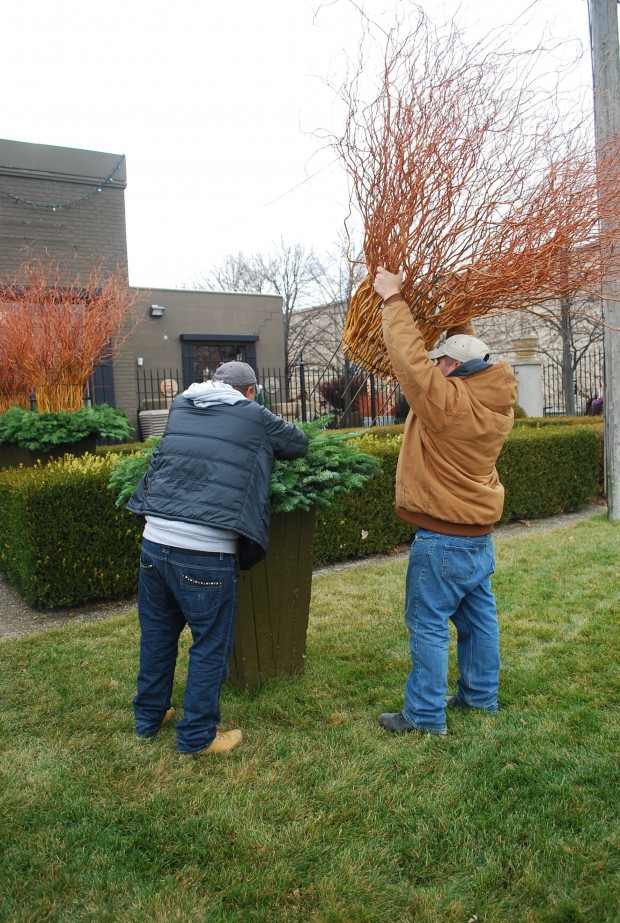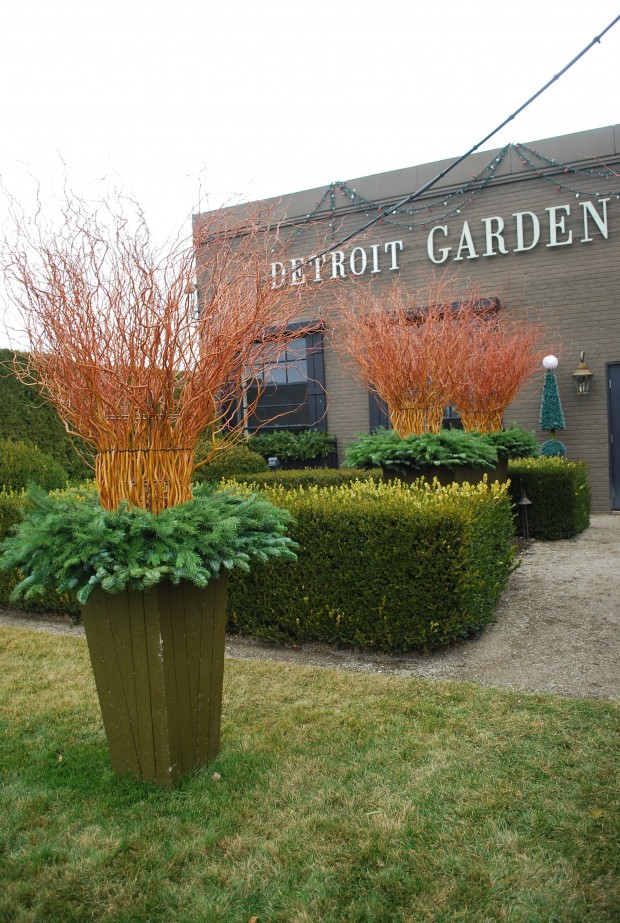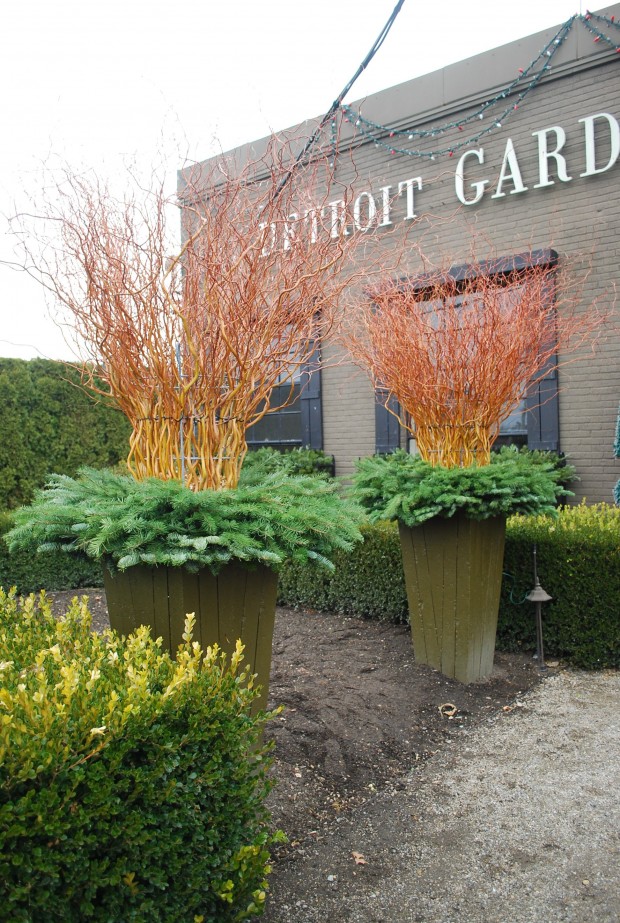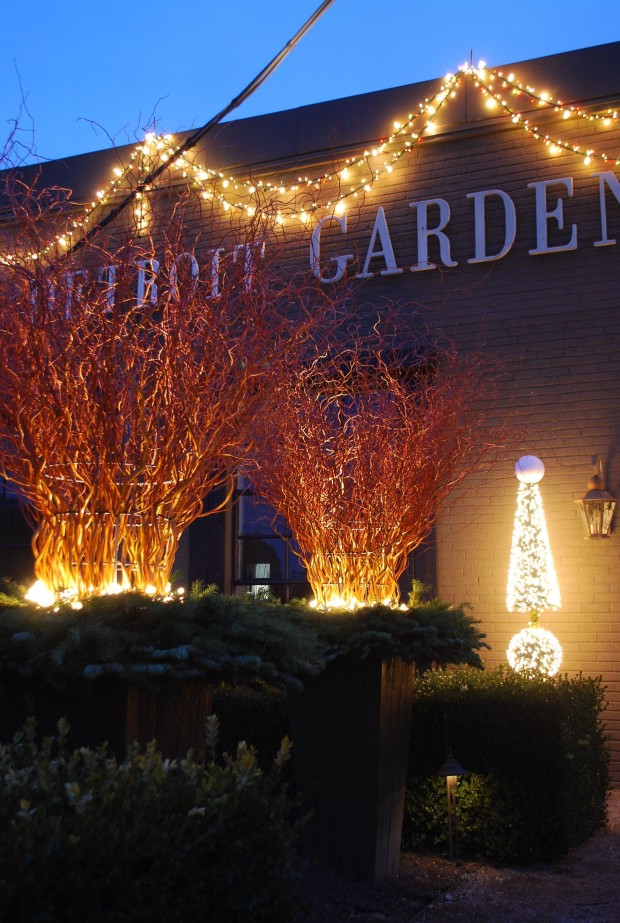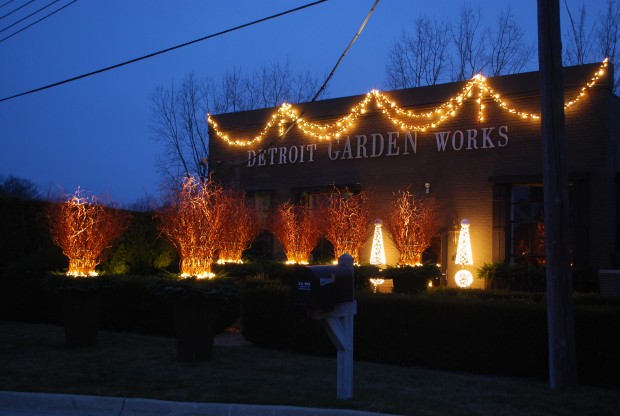Austere would not describe me or my taste. I am very attached to my pink Ugg slippers, left on the radiator all day, and again overnight. Barefoot in the house- morning or evening- in February? Not likely. The radiator in the kitchen hall is host to either my slippers, sneakers or boots-round the clock, all winter long. I have a craving for baked potatoes, beef stew, potato chips, and bratwurst. I load my coffee with half and half. Did I mention that Beurre & Sel in NYC makes and ships cookies that makes winter vastly easier to bear? I hate taking a shower this time of year; who wants to be both wet and cold? I like lots. Lots of plants. Lots of styles. Lots of gardens. Lots of weather suitable for gardening. Lots of color. Second helpings.
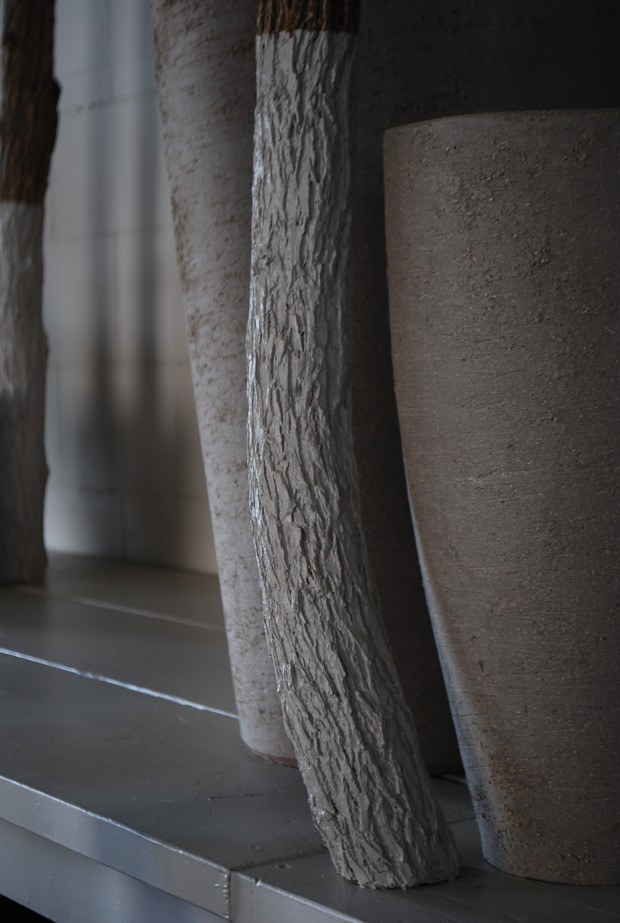 The environment outdoors late in February-very austere. Austere as in cold, and uniformly gray. To this gardener, the winter is a 6 month sentence that is undeserved. Austere? From the dictionary, austere is an adjective that describes anything with is somber, grave, rigorously self disciplined, spartan in style, simple, and plain. Without ornamentation. Restrained. This is my best shot at a description of austere ; utterly simple design refers to a pared down and minimal expression. Winter is a good visual description of austere. All the voices in the garden are hushed. Everything is sleeping, struggling, or enduring. Silently. It will be spring before any winter damage is apparent. The colors outdoors are restricted to gray, taupe, brownie scout brown, and white-with a dash of black every so often. Snow falling makes next to no sound. Snow tastes and feels cold, and not much else. Snow quickly turns to water, if you touch it. In a whiteout, who can see?
The environment outdoors late in February-very austere. Austere as in cold, and uniformly gray. To this gardener, the winter is a 6 month sentence that is undeserved. Austere? From the dictionary, austere is an adjective that describes anything with is somber, grave, rigorously self disciplined, spartan in style, simple, and plain. Without ornamentation. Restrained. This is my best shot at a description of austere ; utterly simple design refers to a pared down and minimal expression. Winter is a good visual description of austere. All the voices in the garden are hushed. Everything is sleeping, struggling, or enduring. Silently. It will be spring before any winter damage is apparent. The colors outdoors are restricted to gray, taupe, brownie scout brown, and white-with a dash of black every so often. Snow falling makes next to no sound. Snow tastes and feels cold, and not much else. Snow quickly turns to water, if you touch it. In a whiteout, who can see?
The tree whose outline in full leave is extravagant, robust and juicy is reduced to sticks in the winter. Sculptural sticks, OK yes, but sticks none the less. The greens represented in the summer garden-silvery. Blue greens. Lime. Forest. Grass green. Green, uncontained. There’s nothing austere about a summer garden. Sun and shade on green-a complex and visually enchanting tapestry. Once the leaves fall, gardeners are left with the skeletal remains. Frankly, winter leaves an ashy taste in my mouth. Branches in winter are those shades of gray that take lots of visual work to sort out. Can you tell I am really tired of the winter?
Why this discussion of austere? The first two of Rob’s six containers due in this spring arrived this past Thursday. Both containers were chock full of contemporary stoneware garden pots from Belgium. The pottery insisted that they would pack the containers. They insisted that nothing could be double stacked. OK, we agreed. When the first container was opened, the airspace in the upper portion-a strongly austere, and minimal gesture. We paid to have air from Belgium, transported to the US. Once I get past this, I find I am enchanted. The pots are hand made from clay that is loaded with grog-hard particles. Very definitely textured. Each shape is available in a cool cream, a taupe, and black. Very austere, this palette. Not one bit like the open armed friendliness of a terra cotta clay pot.
I planned ahead for their arrival. We dressed the floor and shelves with the trunks of a few small caliper trees. I thought the natural forms and textures of these trees would provide some warm company to these austere pots. I never pitch a dead tree. I keep it, in the hopes it might have another life. The whitewash? Traditional agricultural practice-kaolin clay on tree trunks is said to repel insects. How the French whitewash the trunks of their trees-shockingly beautiful. My whitewash is the same color as the pots. The walls and trim were repainted the same color as those cooly cream colored pots. We created an environment which is as close to the color of those cream pots as we could manage.
I wanted to display them in a way that reveals why Rob admires them. I have had a few days to look them over. It took a day with both of my crews to unpack and take the packing material to be recycled. It took another day to put those pots in place. Today I had the shop to myself. This is the last Saturday we will be closed until January 15 of 2014. Nonetheless, there was a steady stream of people stopping by. They are tired of the winter too. But they did like these pots.
I will say that an austere expression, if you give it enough time and attention, is just cause to slow down and reflect. I am looking at shapes and shadows. Texture. Mass. I am appreciating the quiet. My fears about how chilly contemporary pots melted away. The shapes are not only beautifully sculptural, the surfaces tell a story.
There is in fact something very warm and personal about these pots. The hands that love and shape this clay are much in evidence. I have never been so struck by the fact that the clay from which pots are made is an organic material. From the earth. A group of hands fashioning a fabulous collection of pots from clay dirt-this is a story of few words. Minimal shapes and colors. A subtle and highly edited point of view. The quality of the available light greatly influences the appearance of the color.
Their stamp-I can only imagine how it came to be. A stamp is a signature. This is who we are, and what we make. Plain and simple. These contemporary pots-I have decided that I quite like them.
